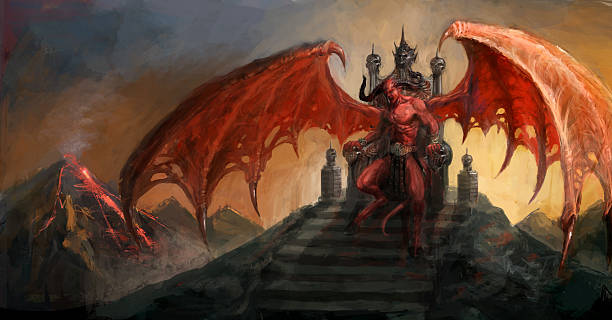thegriffithdc.com – Throughout history, the figure of Satan has been a source of fascination and fear, embodying the ultimate evil and the seductive power of temptation. In art and literature, Satan has been depicted in various forms, from the grotesque and terrifying to the sublime and tragic. This article explores the multifaceted representation of the devil in artistic and literary works, tracing the evolution of his image and the impact it has had on culture.
The Origins of Satan in Art
The depiction of Satan in art dates back to early Christian times, where he was often portrayed as a monstrous creature, half-beast and half-human, designed to instill terror in the faithful. These early representations were influenced by the descriptions found in the Bible, particularly in the Book of Revelation, where Satan is described as a dragon.
Medieval and Renaissance Art
During the Middle Ages, the depiction of Satan became more elaborate, with artists drawing on a rich tapestry of religious and folkloric traditions. The devil was often shown as a grotesque figure with horns, a tail, and cloven hooves, presiding over the torments of the damned in hell.
The Renaissance brought a more humanized and sometimes even sympathetic portrayal of Satan. In Dante’s “Inferno,” for example, Satan is a tragic figure, frozen in the ice of the ninth circle of hell, chewing on the traitors Judas, Brutus, and Cassius. This portrayal reflects the humanist values of the time, which sought to understand the complexities of human nature, even in its most wicked forms.
Satan in Literature
In literature, Satan has been a recurring character, often serving as a foil to the protagonist or as a symbol of rebellion and free will. One of the most famous literary depictions of Satan is in John Milton’s “Paradise Lost,” where he is portrayed as a noble and charismatic leader of the rebel angels, embodying the tragic hero archetype.
The Romantic period saw a shift in the portrayal of Satan, with many writers and poets, such as William Blake and Percy Bysshe Shelley, viewing him as a symbol of rebellion against tyranny and oppression. This reinterpretation of Satan as a heroic figure challenged traditional religious views and reflected the political and social upheavals of the time.
Modern Interpretations
In the 20th and 21st centuries, the figure of Satan has continued to evolve, with artists and writers drawing on the devil’s rich symbolic potential to explore themes of evil, power, and morality. In film and popular culture, Satan has been depicted in various forms, from the demonic antagonist in horror movies to the mischievous trickster in television shows.
Conclusion
The representation of Satan in art and literature is a testament to the enduring fascination with the concept of evil and the complexities of human nature. From the terrifying demon of medieval art to the tragic hero of Renaissance literature, and the rebellious icon of Romantic poetry, Satan has been a versatile symbol that has adapted to the changing cultural and religious landscape. As society continues to grapple with the nature of good and evil, the figure of Satan remains a powerful and provocative presence in the arts.
